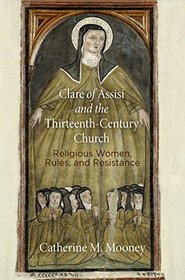Search -
Clare of Assisi and the Thirteenth-Century Church: Religious Women, Rules, and Resistance (The Middle Ages Series)
Clare of Assisi and the ThirteenthCentury Church Religious Women Rules and Resistance - The Middle Ages Series
Author:
In a work based on a meticulous analysis of sources, many of them previously unexplored, Catherine M. Mooney upends the received account of Clare of Assisi's founding of the Order of San Damiano, or Poor Clares. Mooney offers instead a stark counternarrative: Clare, her sisters of San Damiano, and their allies struggled against a papal program b... more »
Author:
In a work based on a meticulous analysis of sources, many of them previously unexplored, Catherine M. Mooney upends the received account of Clare of Assisi's founding of the Order of San Damiano, or Poor Clares. Mooney offers instead a stark counternarrative: Clare, her sisters of San Damiano, and their allies struggled against a papal program b... more »
ISBN-13: 9780812248173
ISBN-10: 0812248171
Publication Date: 9/13/2016
Pages: 344
Rating: ?
ISBN-10: 0812248171
Publication Date: 9/13/2016
Pages: 344
Rating: ?
0 stars, based on 0 rating
Publisher: University of Pennsylvania Press
Book Type: Hardcover
Members Wishing: 1
Reviews: Amazon | Write a Review
Book Type: Hardcover
Members Wishing: 1
Reviews: Amazon | Write a Review
Genres:
- History >> World >> Women in History
- Reference
- Religion & Spirituality >> Religious Studies >> History
- Christian Books & Bibles >> Church History




